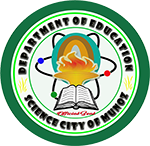By: Ann Christian A. Francisco
Almost a decade ago, outcome-based education was introduced and adopted here in the Philippines. Outcome-based education centers on the things that we want our students to demonstrate whether at the end of the lesson or at the end of their program. The learning process, from planning to execution to assessment and even review revolves around the outcome/s. These outcomes are the bases of all the learning-teaching operations, and one of these operations is assessment. Why do we need to ensure that our assessments are outcomes-based?
We assess our students in order for us to have an idea on how they are doing in our class and in the course that we are teaching them. There are two kinds of assessment that we administer to our students; these are the formative and the summative assessments. How do we design and construct these assessments? We go back to our intended learning outcomes, traditionally known as objectives. We plan and draft our assessments based on the measurable verbs used in the statement of outcomes. If the assessment deviates from the verbs of the outcomes, then there will be misalignment. This results in questionable validity and reliability of the assessment task. Likewise, the verbs used in the outcome statements dictate the level of difficulty of the exam and the kind of assessment to be administered. For example, the verb used is “identify.” That is in the lower cognitive skill and the teacher will not ask the students to explain because if he or she does, there will be misalignment again between the outcome and the assessment task.
Following the importance of alignment is objectivity. Having prepared a Table of Specification (TOS) as the blue print of the assessment, then there would be no reason for the assessment to be subjective. In the Table of Specification (TOS) are the number of items to be administered, the type of exam or assessment to be given and the topic/s to be covered by the assessment. Another component used to ensure objectivity is the rubrics or the criteria for scoring with areas to be measured, the descriptors and the numerical equivalents. If the TOS and the rubrics are used and followed, then students and parents should not be accusing teachers of inventing the grades of the students. We, as teachers, can always show them the documents that prove their scores and grades. The TOS and the rubrics are important not only to the teachers but also to the students. As mentioned earlier, teachers are guided in their test preparation and checking. On the part of the students, they are informed of the coverage of the assessment and how it will be scored. This objectivity leads to or partners with transparency.
Finally, outcomes-based assessments are considered meaningful and relevant. In the past years and maybe at present, students are heard saying, “I don’t know where the items came from.” “The questions raised in the test had nothing to do with the course.” “There were too many enumeration and essay questions,” and the like. These comments come out because the students do not see a connection between the assessment and the topics discussed in the classroom and the requirements for every lesson. That is why it is very important to make public the TOS, the daily lesson logs (except the graded assessments) and the rubrics to be used so that everybody knows what is expected and where and how the lessons proceed. If the students know the outcomes and they see connection between the outcomes and what is happening in the classroom (which is assumed to be based on the outcomes also), then they will never have a comment of the assessment being vague and a punishment. Instead, they will look at the assessment as a reflection of how they are doing as individual learners, whether they are improving or not. They will also know where they are weak at and therefore be able to know what to do next time. Assessment as a vital part of learning cannot be underestimated. Most of the students are actually depending and looking forward to the result of this because this is where they can gauge whether they are doing well or not. As teachers, we have to explain to our students that assessments need not be graded all the time. Moreover, we also have to remind them that the result of the assessments done in class does not define them; it only reveals a part of their learning experiences. For us teachers, we always have to keep in mind that in order to really measure student’s learning, our assessments have to be varied, cognitively appropriate, objective and always based on outcomes.
